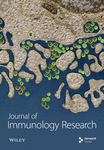Anti-laminin-1 Autoantibodies, Pregnancy Loss and Endometriosis
Abstract
Laminin-1 is a major component and multifunctional glycoprotein of basement membranes that consists of three different subunits, α1, β1 and γ1 chains. It is the earliest synthesized network-forming protein during embryogenesis and plays an important role in embryonic development, embryonic implantation and placentation. We have recently shown that IgG anti-laminin-1 antibodies were significantly associated with recurrent first-trimester miscarriages and with subsequent pregnancy outcome. Interestingly, these antibodies were also observed in patients with endometriosis-associated infertility but not in patients with other causes of infertility, including tubal factors, hormonal and uterine abnormalities. Laminin-α1, -β1 and -γ1 mRNAs have been detected in 90% of endometriotic lesions and all laminin-α1, -β1 and -γ1 chains were localized in the basement membranes of glandular epithelium in endometriotic peritoneal lesions. Western blot analysis showed that anti-laminin-1 antibodies from those patients reacted with all laminin-1′s chains. ELISA also confirmed that one of the target epitopes for these antibodies was located in a particular region of the laminin-1 molecule, i.e. the carboxyl-terminal globular G domain of α1 chain. IgM monoclonal anti-laminin-1 autoantibody, that we recently established, also recognized the G domain. Anti-laminin-1 antibodies from mice immunized with –mouse— laminin-1, caused a higher fetal resorption rate with lower embryonic and placental weights. Thus, anti-laminin-1 antibodies may be important in development of autoimmune-mediated reproductive failures and the assessment of the antibodies may provide a novel non-invasive diagnosis of endometriosis.




